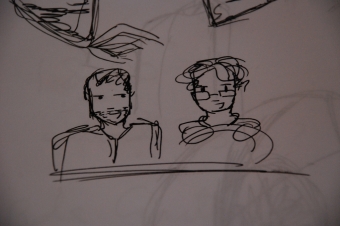Summary:
The activity focuses on the process of contract formation, especially the form and times of offer and acceptance. It is intended that students consolidate key legal concepts and develop the ability to argument in difficult cases. For that, they must simulate a judgment of a true case in which a businessman offered equity business partnership to a colleague, on a plane, on a napkin sheet.
Objective:
- GENERAL GOAL: to consolidate legal concepts related to contract formation and to interpretation of binding statements.
- SPECIFIC GOAL: it is intended that students develop reasoning and the ability of legal argument.
Dynamics:
- TEACHING METHOD: simulation, in which students interact with each other from defined roles.
- REQUIREMENTS: previous classes on contractual training and interpretation.
- INTRODUCTION TO THE DYNAMICS: based on the application of the case, the room was divided into three groups – Landim’s lawyers (group A, with 7-10 members), Eike’s lawyers (group B, with 7-10 members) and judges (group C, with 5 or 7 members). Each group received the description of the case containing the rules of debate, the application and some guidelines for the development of the argument (attachment 1), and had 1 hour to prepare and can consult legislation, doctrinal material and court decisions available at the internet. The professor walked around the groups, asking questions or discussing other possible ways. Before the judgment began, the groups had to deliver to the professor a brief description of the arguments that would be used.
- DEVELOPMENT OF THE DYNAMICS: after preparation, the groups started discussions in the following order:
1) A Group members presented their arguments individually (6 minutes);
2) B Group members presented their answers individually (6 minutes);
3) A Group members presented their replica individually (6 minutes);
4) B Group members presented their rejoinder individually (6 minutes).
5) Members of the Group C presented their votes individually (8 minutes).
The professor just coordinated the activity, intervening only when the manifestation of the students contained serious mistakes. So that the judges would not become oblivious to the activity, they should also summarize the arguments brought by each party.
All students must necessarily manifest themselves during the activity, but could not speak more than once in the lawyer or judge position. If the student had any more ideas of arguments, he should convey the idea to the group’s colleague, and the he or she could manifest on the topic. During the debate, it was not allowed the intervention of other students, even if they were members of the group.
- END OF THE DYNAMICS: the dynamics ended with the presentation of the vote by the judges. The professor has taken over some technical concepts at the beginning of the next class to avoid inaccuracies that may have arisen in the simulation.
Evaluation:
- FEEDBACK: during the next class the professor resumed with the theme discussion.
- GRADE EVALUATION: the posture of the students during the discussions and the simulation was taken into account for participation grade. This note had two components: exercise and participation in a broad sense. The delivery of the argument list for the group served as an exercise grade, while the individual student participation in the group discussion, presentation and simulation, composed the final participation grade. The professor appreciated technicians, consistent arguments.
Observation:
It is possible to vote by ballot, filled out by all students, after discussion between the parties, which creates more expectations and reactions from the students.





